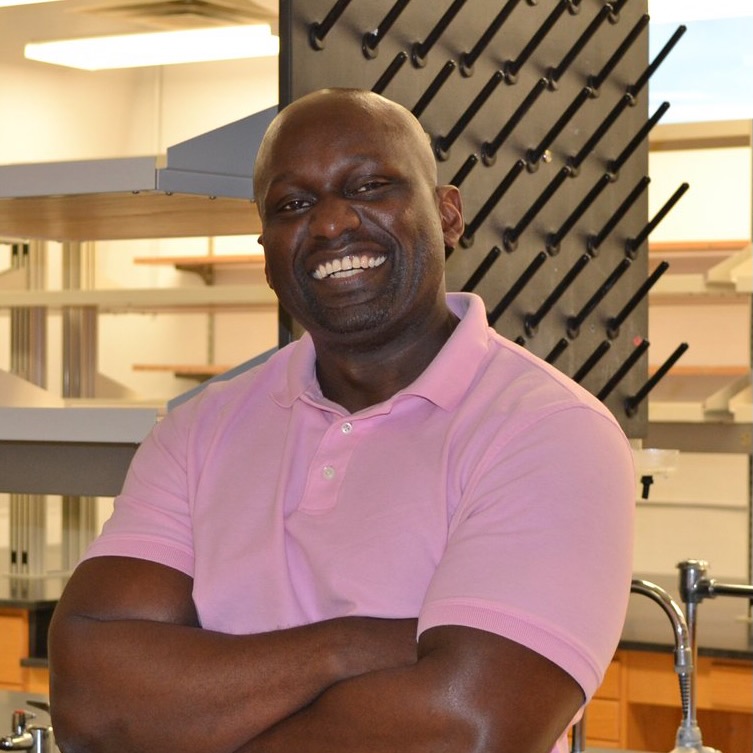Dr. Chabu, who joined the faculty at Mizzou about a year ago, is interested in the way that the environment around a tumor impacts its growth and development.

Chiswili Yves Chabu, Ph.D.
Assistant Professor of Biological Sciences (University of Missouri)
After graduating from Southern Oregon University, Dr. Chabu earned his Ph.D. from the University of Oregon and did postdoctoral work at the Yale University School of Medicine. A common thread through his interests has been understanding what controls the rate that cells divide — first in understanding how neural stem cells keep the brain healthy, and now in understanding how tumors grow.
Cancer is a disease characterized by uncontrolled cell division and proliferation. Often this is the result of overactive signaling within a cell: messages that encourage the cell to divide are received by the nucleus repeatedly in the absence of a new environmental stimulus. Much of Dr. Chabu’s work to date has focused on the Ras family of proteins, which sit near the top of a cascade of molecular signals that will eventually induce a cell to divide. For that reason, acquired mutations that permanently leave Ras “on” are found in many different cancers.
In a recent paper, Dr. Chabu and his postdoctoral advisor used a fruit fly model of overactive Ras to better understand why it leads to uncontrolled tumor growth. Specifically, they hoped to explain why these tumors with overactive Ras still required a second protein called Egfr, which was known to turn Ras “on”. (If the problem is that Ras is ALWAYS active, why does it still need its activator?) The study worked by removing various proteins of interest from flies with overactive Ras and observing which ones prevented tumors from growing as much as expected.
They were able to show that Ras causes more of a protein called spitz to be made, and that spitz triggers Egfr to increase the amount of Arf6, and that Egfr helps Arf6 interact with Hh, protecting it from being degraded within the cell. This supports tumor growth, because normally Hh would be on the surface of the tumor cells, sending signals to nearby cells to divide. All in all, they were able to describe a new set of interactions between cancer-promoting proteins, explaining another piece of the puzzle of how tumors expand.